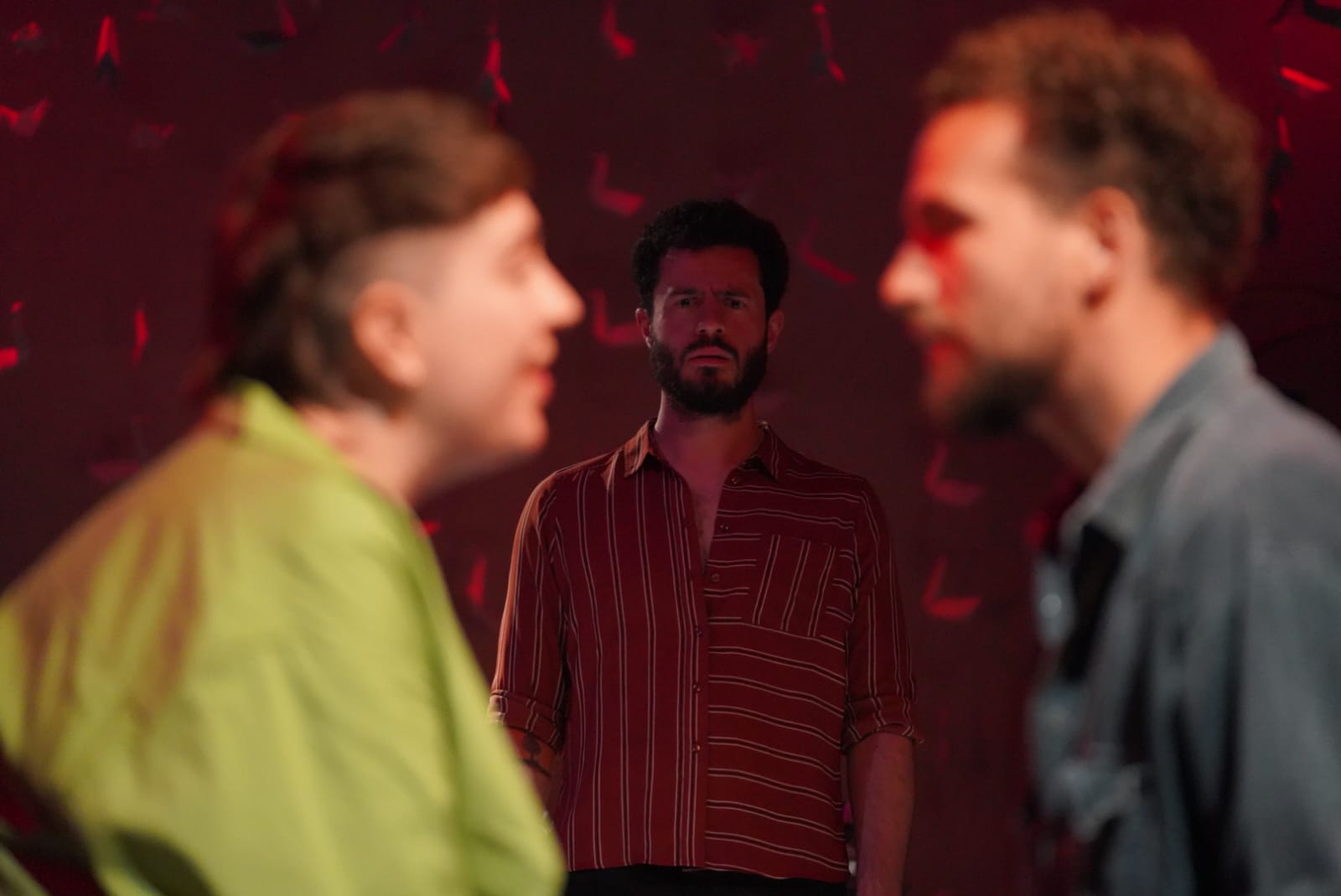Our Last First – Bullet Point Theatre / The Space, London
A play for anyone, cast live on stage, Out Last First is a universal love story and a lesson in inclusive theatre-making.

Our Last First
Our Last First began, as did so many things (including the relaunch of this blog) as a lockdown project. During a socially distanced walk an idea was born in the mind of Bullet Point Theatre co-founder Lucinda Coyle. She went home and wrote a scene for any actors, with no references to gender, age or physical characteristics. From this seed Our Last First has sprouted. It’s now a full-length play, at two hours including interval. And has additional characters: a Sibling and Friend as well as couple A and B.
In a further exploration of the universality of these characters and their love, the show is cast live each evening. You have to be clued into this to know what’s happening, as each of the four actors retrieves a book and learns which character they will play by the colour of a light within it. And it’s a testament to the cast as well as to people like the Director (Samuel Xavier) and Intimacy Coordinator (Katharine Hardman) that the show then progresses as if they play these roles every night, rather than it being one of 24 possible permutations of the casting.
In the performance I saw, Eoin Quinlan played the role of A, opposite Beca Barton as their partner B. Annie Loftus played A’s sibling, and Joshua Eldridge-Smith B’s friend. As the play progresses, it’s hard not to imagine the actors in different roles. You start to wonder how they would have played this or that scene. How would the first date or that argument play out differently with if you changed those two around. Or swapped out this actor for that one? Given the diversity of the cast in some areas and relative lack of diversity in others, it’s a fascinating kind of multiverse of stories for this and future stagings. Like a progression of other productions I’ve seen with rotating casts.
Firsts As Lasts
The ‘message’ of Our Last First, if we consider theatre to be about the communication of an idea or point, is twofold. Firstly there is the meta level I outlined above. How can we free a story by reducing the restrictions on who can play each character, thereby making it more universal and relatable? The second message feels more a product of that lockdown inspiration. This is about the importance of living in and cherishing the moment, rather than focusing on a future which is always out of reach.
The play is thus structured into a series of vignettes. A first date. First time staying over. First time meeting the parents. Also first argument. Or first time building kit set furniture together (which I can confirm is a test for any relationship). These scenes are reminiscences, the story bookended by B looking back at their relationship with A as they try to capture it on paper. The firsts are therefore also poignant lasts: the last time I had that first with you. And to add in one final layer, in the interludes before and after the play and during the interval, a series of recordings plays of other voices remembering their ‘first’ moments. First date. First time they were offered a ride on a motorbike. Or first time taking their baby home from the hospital.
To some degree the live casting premise overshadows this second message. Perhaps because this one is less boundary-pushing. In fact it’s not unusual at all to be exhorted to live in the moment. The ambiguity of the ending and, once more, that premise of different permutations of the relationship, prevent it from becoming too trite.
Final Thoughts
As I mentioned earlier, the cast handle the fact that they may play any role admirably. Watching Eoin Quinlan and Beca Barton as A and B, they felt so committed to the roles and comfortable with each other that it’s hard to believe they don’t always play a couple. Again, kudos to Katharine Hardman for helping them to develop this intimacy with each other in a complex production. Annie Loftus as the Sibling and Joshua Eldridge-Smith as the Friend had much less time on stage when I saw Our Last First. The Sibling role felt like it had its own mini-arc of development. The Friend role on the other hand felt more of a necessary plot device: the relationship disruptor.
The staging is fairly simple. Lucy Sneddon’s set design is interesting. Our Last First is currently on in The Space, a former mission church on the Isle of Dogs. The raised platform at one end is more fulsomely decked out and operates as the ‘real world’ of B as present-day writer, while the memories of all the firsts take place in a square stage area with minimal props and quick scene changes. I imagine the movement must be relatively regimented to allow the cast to switch between roles. And at times the artificial distances between characters in certain scenes felt a little stilted. But all in all the quality of the acting overcame these challenges.
Our Last First is a touching love story, and interesting in how it reminds us at one and the same time how universal the experience of love is, and how quickly a story can change based on the actors cast in the roles. For the full experience, grab a drink in the upstairs bar and take your seat about 10 minutes early to hear a full cycle of the audio recordings.
Salterton Arts Review’s rating: 3.5/5
Our Last First on until 14 June 2023
Trending
If you see this after your page is loaded completely, leafletJS files are missing.

